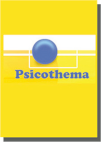Abstract
The aperture problem: an alternative solution. A new explanation on how the human visual system solves the aperture problem is proposed. It has a more simple structure than classical models (Adelson y Movshon, 1982; Wilson, Ferrera y Yo, 1992). Whereas these defend a processing in two steps, the new solution assumes just one. One experiment has been running in order to test if this new explanation is feasible. Stimuli used in the experiment were moving sinusoidal gratings. These were designed to produce different perception predictions of the stimuli, if either classical models or the new solution was accepted. The first would predict a perception of a moving horizontal plaid with a flickering background. The new solution predicts a more complex perception: a stack of horizontal strips with opposite directions of motion. The experiment results seem to support the new solution.Downloads
Download data is not yet available.
